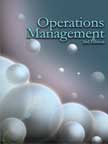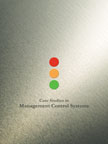Operations Management
 |
Details
Textbook:
Pages : 329;
Paperback;
210 X 275 mm approx.
Workbook:
Pages :
239; Paperback;
210 X 275 mm approx, Sample Applied Theory Questions
Courier charges extra
Pricing
Textbook Price: Rs. 900;
Workbook Price: Rs. 700;
Available only in INDIA
Detail Table of Contents
Click below to view
HTML
Design of Production Processes : Chapter 5
SUMMARY:
Production processes are designed to produce the required quantity of goods of the desired quality, at the right time, and at minimal costs. Process design helps develop a detailed plan for manufacturing products or services, and provides the foundation and structure for production operations. Decisions regarding the selection of a process design for producing a product or a service are influenced by many factors such as the nature of demand for the product, the degree of vertical integration, product and volume flexibility, the degree of automation, the quality level required, and the degree of customer contact involved.
|
|
organized by the type of product or service being produced. They are primarily designed for high-volume and standardized products. Process-focused systems are designed for low-volume, small batch and customized products and are used mostly by processing industries. In a group technology layout, dissimilar machines are grouped into work centers to work on products similar in shape and processing requirements. It also identifies families of parts with common characteristics that are produced in larger batches and gives them a common code.
We also discussed the various process planning aids like assembly charts and process charts. The selection of process design is usually based on factors like the variety and volume of products to be produced, the availability of funds for investment and the estimated ranges of profits.



